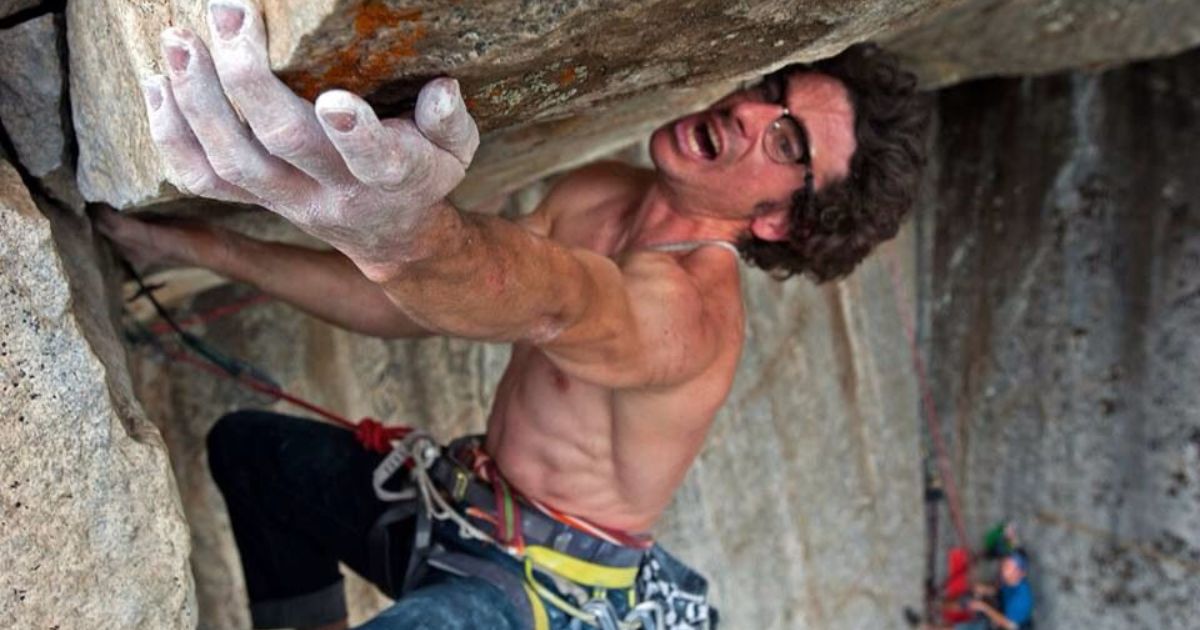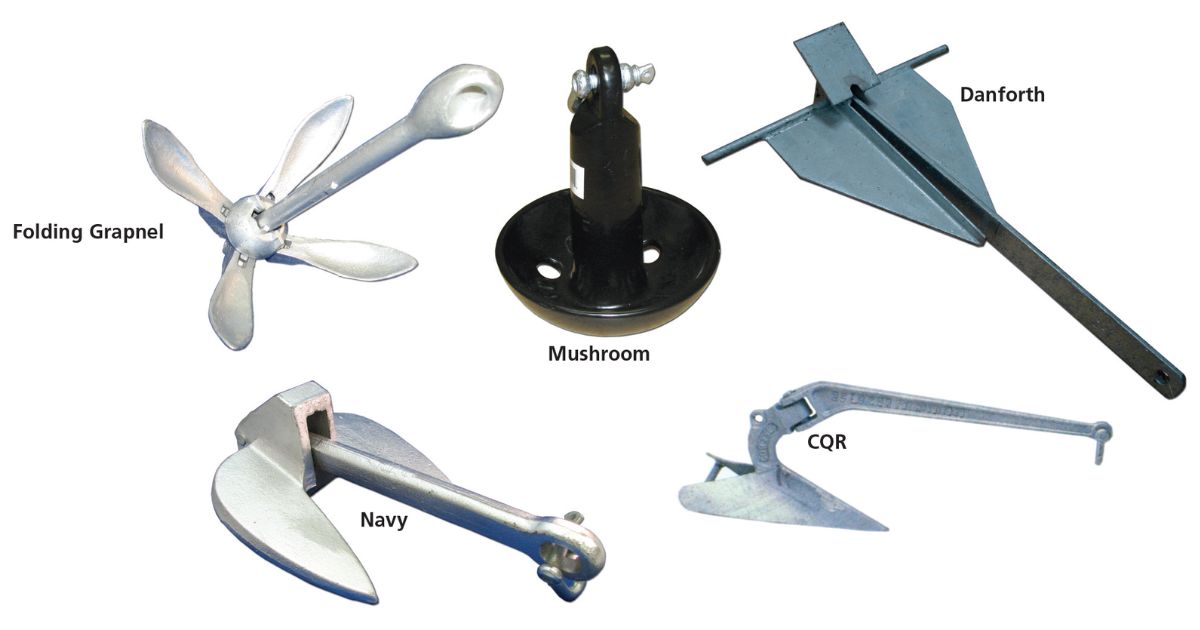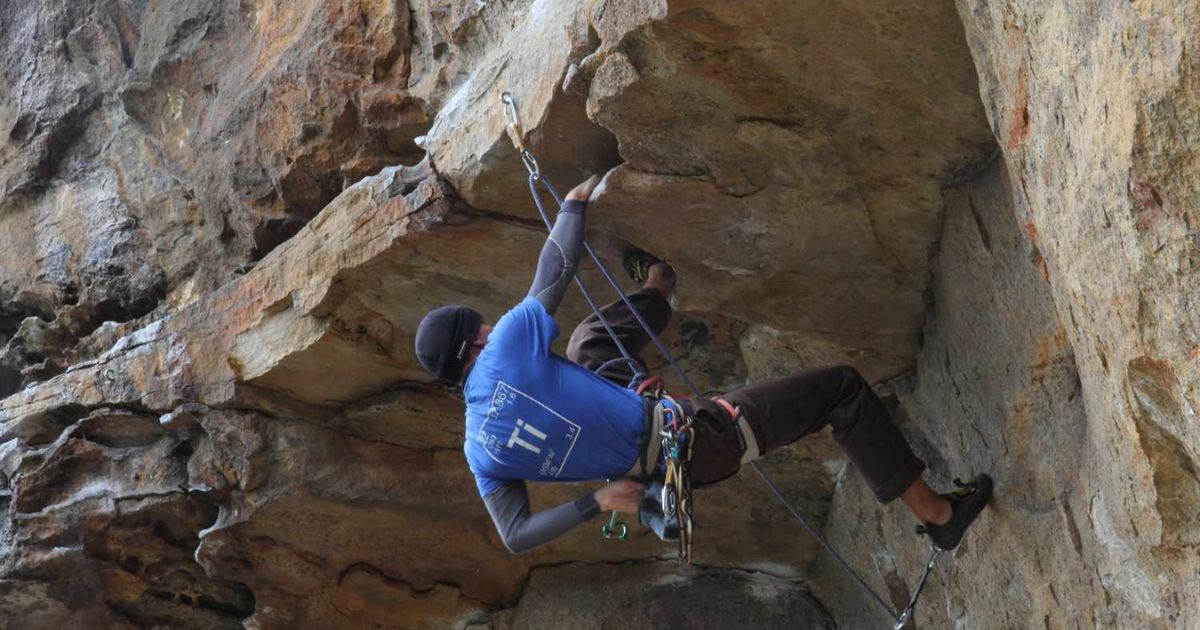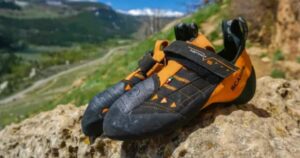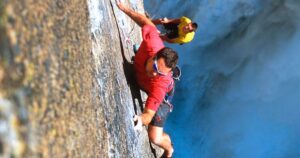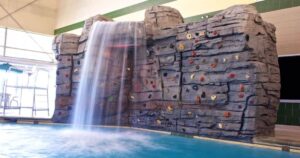Did you know that rock climbers often have to leave their anchors behind after a climb? This can be frustrating for climbers who invest time and money in their gear. However, fear not! In this article, we will explore the techniques, equipment, and best practices that rock climbers use to retrieve their anchors. Whether you’re a beginner or an experienced climber, you’ll find valuable information on how to safely and efficiently bring your anchors back, ensuring the longevity of your gear and your climbing adventures.
Key Takeaways
- Understanding the different types of anchors and anchor retrieval equipment is important for rock climbers.
- Proper knot tying and hitch techniques, such as the Munter-Mule Combination, Figure-Eight Knot, Clove Hitch, and Prusik Knot, are essential for safe and efficient anchor retrieval.
- Rope management tips, including using the Figure-Eight Follow-Through Knot, Munter Hitch, Clove Hitch, and practicing proper rope coiling, are important for tangle-free retrieval.
- Techniques for single and multi-pitch climbs, such as using the appropriate carabiners and slings, mastering tools and techniques for retrieval, and practicing rope management, are crucial for successful and efficient climbs.
Types of Anchors
Rock climbers utilize various types of anchors to secure themselves to the rock face while climbing. These anchors are essential for their safety and enable them to ascend and descend the rock walls. Climbing gear plays a crucial role in the selection and use of these anchors. There are several types of anchors commonly used in rock climbing, including fixed bolts, camming devices, and removable nuts.
Fixed bolts are permanent anchors drilled into the rock, providing a reliable and secure attachment point. Camming devices, also known as cams, are mechanical devices that expand within cracks, providing a solid anchor. Removable nuts, or nuts, are passive protection devices that are wedged into cracks or pockets. Understanding and mastering the use of different types of anchors is a fundamental aspect of climbing techniques. Transitioning to the next section, anchor retrieval equipment is necessary for safely removing these anchors after completing a climb.
Anchor Retrieval Equipment
Anchor retrieval equipment is essential for safely removing the anchors used by rock climbers. Here are four important items to consider when it comes to anchor retrieval:
- Anchor retrieval devices: These specialized tools, such as pull cords or mechanical devices, are designed to help climbers retrieve their anchors efficiently and safely.
- Proper anchor cleaning techniques: It is crucial for climbers to clean their anchors thoroughly to prevent damage and ensure future use. This can include brushing away dirt and debris, inspecting the anchor for any signs of wear or damage, and using appropriate cleaning solutions when necessary.
- Anchoring accessories: Additional equipment, such as carabiners, slings, and quickdraws, may be needed to assist with anchor retrieval. These accessories help ensure a smooth and efficient process.
- Storage and organization: Having a system in place to store and organize anchor retrieval equipment is essential for quick and easy access when needed.
With the right anchor retrieval equipment and techniques, climbers can safely remove their anchors and move on to the next challenge. Now, let’s explore the different knots and hitches used in anchor retrieval.
Knots and Hitches for Anchor Retrieval
This section will explore the essential anchor retrieval techniques used by rock climbers. It will also address common mistakes made when tying knots and hitches for anchor retrieval. Additionally, rope management tips will be provided to ensure efficient and safe retrieval of anchors during rock climbing expeditions.
Essential Anchor Retrieval Techniques
Climbers employ essential knot and hitch techniques for retrieving their anchors during rock climbing. These techniques are crucial for the safe and efficient removal of anchors once a climb is completed. Here are four key anchor retrieval techniques that climbers use:
- The Munter-Mule Combination: This technique involves using the Munter hitch to create friction on the rope, allowing the climber to safely lower themselves from the anchor. The mule knot is then tied to secure the rope in place.
- The Figure-Eight Knot: This knot is commonly used to attach the rope to the anchor. To retrieve the anchor, climbers can simply untie the figure-eight knot and pull the rope through.
- The Clove Hitch: This hitch is often used to secure the rope to a carabiner on the anchor. To retrieve the anchor, climbers can untie the clove hitch and remove the rope.
- The Prusik Knot: This knot can be used as an additional safety measure during anchor retrieval. By tying a prusik knot below the anchor, climbers can create a friction hitch that allows them to ascend the rope and retrieve the anchor.
Common Knot Mistakes
During the process of anchor retrieval, rock climbers commonly make mistakes with their knots and hitches. Understanding and avoiding these common knot mistakes is essential for a successful anchor retrieval. One of the most common errors is tying an improper knot, such as a granny knot instead of a square knot. This mistake can result in an insecure anchor, compromising the safety of the climber.
Another frequent mistake is tying a knot too loosely, which can lead to the knot unraveling or slipping. It is crucial to ensure that all knots are tied tightly and properly dressed. Additionally, climbers should be cautious of tying knots with twists or tangles, as this can weaken the knot and decrease its strength. By being aware of these common knot mistakes and practicing proper techniques, climbers can enhance the safety and efficiency of their anchor retrieval process.
Rope Management Tips
To ensure a successful anchor retrieval, rock climbers employ various rope management techniques, including the use of specific knots and hitches. Proper rope organization and belay device techniques are essential for efficient and safe anchor retrieval. Here are four important tips for rope management during anchor retrieval:
- Use the Figure-Eight Follow-Through Knot: This knot is commonly used for attaching the rope to the anchor. It is easy to tie and untie, providing a secure connection.
- Employ a Munter Hitch: The Munter Hitch is a versatile knot that can be used for belaying, rappelling, and emergency ascending. It allows climbers to control the rope smoothly during anchor retrieval.
- Consider the Clove Hitch: The Clove Hitch is useful for temporary anchor points. It is quick to tie and untie, making it ideal for efficient anchor retrieval.
- Practice Proper Rope Coiling: Coiling the rope neatly and compactly prevents tangles and snags during anchor retrieval. It saves time and ensures a smooth transition.
Techniques for Single-Pitch Climbs
When completing a single-pitch climb, it is important for rock climbers to utilize effective techniques for retrieving their anchors. This involves understanding the types of carabiners and slings used, as well as the proper use of belay devices. Carabiners are essential for attaching the climbing rope to the anchor, and they come in various shapes and sizes, such as the standard D-shaped carabiner or the lightweight wire gate carabiner.
Slings, on the other hand, are used to extend the anchor point and provide flexibility in positioning. Belay devices, like the popular ATC (Air Traffic Controller), allow climbers to control the rope’s friction during descent. By mastering these tools and techniques, climbers can safely and efficiently retrieve their anchors. Transitioning into the next section on techniques for multi-pitch climbs, it is important to note that the skills and equipment used in single-pitch climbs lay the foundation for more advanced climbing endeavors.
Techniques for Multi-Pitch Climbs
When it comes to multi-pitch climbs, rock climbers rely on anchor retrieval methods and rope management techniques to navigate the various stages of the climb. Anchor retrieval methods involve safely removing the gear used to secure the climbers at each belay station, allowing them to continue their ascent. Rope management techniques, on the other hand, ensure that the rope is properly managed and protected throughout the climb, minimizing the risk of tangles or damage. These techniques are essential for a successful and efficient multi-pitch climb.
Anchor Retrieval Methods
Anchor retrieval methods for multi-pitch climbs involve the systematic disassembly of the anchor system, ensuring the safe and efficient removal of gear. To help climbers understand the various techniques utilized, here are four anchor retrieval methods commonly employed:
- Traditional Method: This technique involves removing gear in the reverse order of placement, ensuring stability and minimizing the risk of dislodging other pieces.
- Equalization Method: By redistributing the load on the anchor, this method ensures that each piece shares the force equally, enhancing security and stability.
- Sliding-X Method: This technique utilizes a sliding knot to adjust the length of the anchor point, allowing for easy removal of gear without compromising stability.
- Quad Method: Employing four anchor points instead of the usual two, this method provides increased redundancy and allows for efficient gear retrieval.
Understanding these anchor retrieval methods is essential for climbers navigating different types of rock formations and choosing suitable anchor material options. With a solid understanding of anchor retrieval, climbers can now focus on rope management techniques.
Rope Management Techniques
Continuing with the discussion on anchor retrieval methods, proficient rock climbers frequently employ rope management techniques for multi-pitch climbs to ensure efficient and secure ascent. Rope coiling techniques play a crucial role in maintaining a neat and organized rope system. By using proper coiling techniques, such as butterfly or mountaineer coils, climbers can prevent tangles and snags, allowing for smooth rope handling during transitions between pitches.
Additionally, rappelling techniques are essential for descending safely after completing a multi-pitch climb. Climbers must master techniques like the standard rappel or the double-rope rappel to efficiently descend while minimizing the risk of rope entanglement or accidents. These rope management techniques are vital for a successful multi-pitch climb, ensuring climbers can focus on the task at hand without unnecessary distractions. Moving forward, let’s explore considerations for different rock types.
Considerations for Different Rock Types
Different rock types present unique challenges for rock climbers when it comes to retrieving their anchors. Considerations for different rock types include:
- Limestone: This type of rock can be prone to erosion and can have sharp edges, making it difficult to retrieve anchors without damaging the equipment or the rock itself.
- Granite: Known for its durability, granite can require extra effort to remove anchors due to its hard, dense nature. Specialized tools may be needed to extract the anchors securely.
- Sandstone: With its soft and porous composition, sandstone can be fragile and prone to crumbling. Care must be taken when retrieving anchors to avoid causing damage to the rock.
- Basalt: This type of rock can have strong, interlocking grains, making it challenging to remove anchors. Special techniques, such as utilizing rock wedges or specialized anchor removal tools, may be necessary.
Considering the unique characteristics of each rock type is crucial for successful anchor retrieval. Managing rope and gear during anchor retrieval is the next aspect to discuss.
Managing Rope and Gear During Anchor Retrieval
One important aspect of anchor retrieval for rock climbers is effectively managing the rope and gear involved in the process. Proper rope management techniques and safety precautions are crucial to ensuring a smooth and secure retrieval. When retrieving an anchor, climbers must first assess the condition of the rope and inspect it for any signs of damage or wear. If any issues are identified, the rope should be replaced to maintain safety.
To effectively manage the rope during retrieval, climbers can use techniques such as flaking the rope to prevent tangles and knots. Additionally, using carabiners and slings to organize and secure the rope can help maintain control and prevent accidents. Safety precautions should always be followed, including wearing a helmet and ensuring proper communication with belayers. By implementing these rope management techniques and safety precautions, climbers can safely retrieve their anchors and continue their ascent.
Safety Tips and Best Practices
To ensure a safe and successful anchor retrieval, rock climbers must adhere to a set of essential safety tips and best practices. Here are four key recommendations to keep in mind:
- Regular Rope Maintenance: Inspect your climbing rope before and after each use. Look for signs of fraying, abrasions, or damage. If any issues are found, retire the rope immediately to prevent accidents during anchor retrieval.
- Thorough Climbing Gear Inspection: Before starting the anchor retrieval process, thoroughly inspect all your climbing gear. Check carabiners, slings, cams, and other equipment for signs of wear, cracks, or deformation. Replace any damaged gear to ensure reliable and secure anchor retrieval.
- Proper Knot Tying: Use appropriate and reliable knots when securing your anchors. Ensure your knots are correctly tied and properly dressed to minimize the risk of untimely release during retrieval.
- Communication and Teamwork: Maintain clear and effective communication with your climbing partner throughout the anchor retrieval process. Establish a plan, discuss responsibilities, and work together to ensure a safe and efficient retrieval.
Frequently Asked Questions
Can Rock Climbers Use the Same Anchor Retrieval Equipment for Both Single Pitch and Multi-Pitch Climbs?
Rock climbers can use different anchor retrieval equipment for single pitch and multi-pitch climbs due to equipment differences and the need for different anchor retrieval techniques. These variations ensure safe and efficient removal of anchors in both scenarios.
What Are Some Common Mistakes to Avoid When Retrieving Anchors?
When retrieving anchors, rock climbers should be aware of common mistakes to avoid. It is important to follow best practices to ensure safety and efficiency. By understanding these mistakes, climbers can improve their anchor retrieval techniques.
Are There Any Specific Safety Precautions to Take During Anchor Retrieval?
When retrieving anchors, rock climbers must follow specific safety precautions to ensure their own well-being. This includes using appropriate anchor retrieval equipment and following proper techniques to minimize the risk of accidents or injuries.
What Are the Advantages and Disadvantages of Using Different Types of Knots and Hitches for Anchor Retrieval?
The advantages and disadvantages of using different types of knots and hitches for anchor retrieval in rock climbing vary based on factors such as strength, ease of tying and untying, and reliability in different conditions.
How Can Climbers Determine the Strength and Reliability of Their Anchors Before Attempting Retrieval?
Before attempting retrieval, climbers can determine the strength and reliability of their anchors through thorough strength assessment and anchor testing. This ensures the safety and stability of the anchors during the retrieval process.
Conclusion
In conclusion, rock climbers employ various techniques and equipment to retrieve their anchors during both single and multi-pitch climbs. They rely on types of anchors, anchor retrieval equipment, and knots and hitches specifically designed for this purpose. Additionally, climbers must consider the type of rock they are climbing on and effectively manage their rope and gear during anchor retrieval. By following safety tips and best practices, climbers can ensure a successful and safe retrieval of their anchors.
